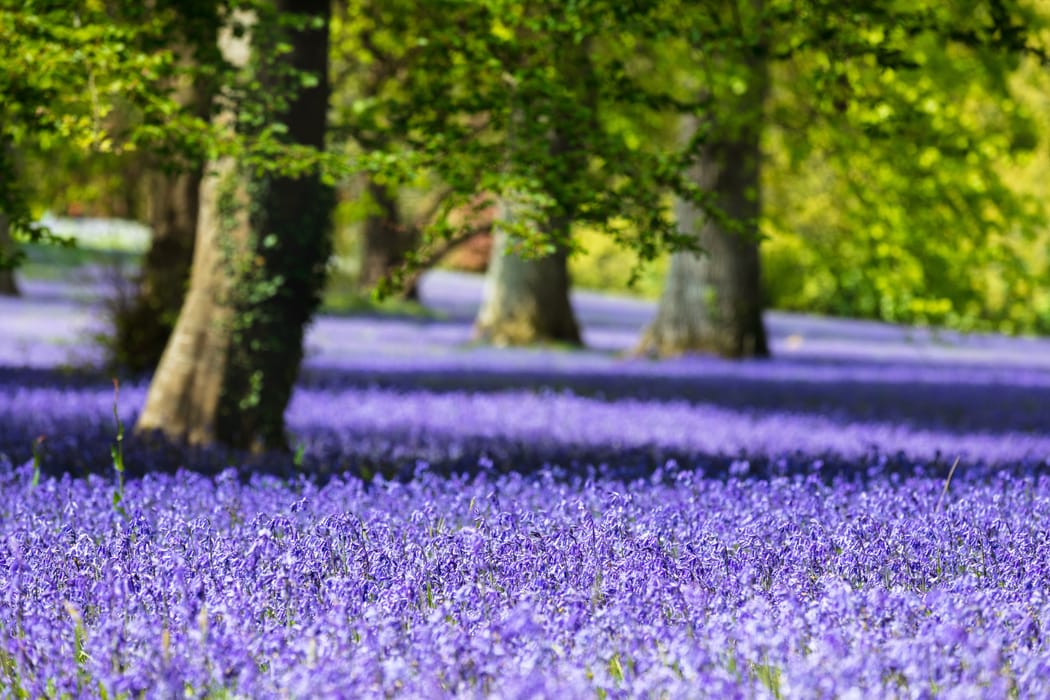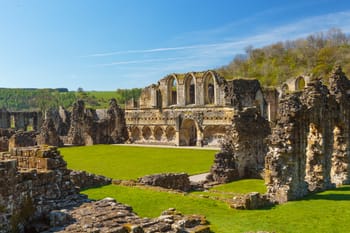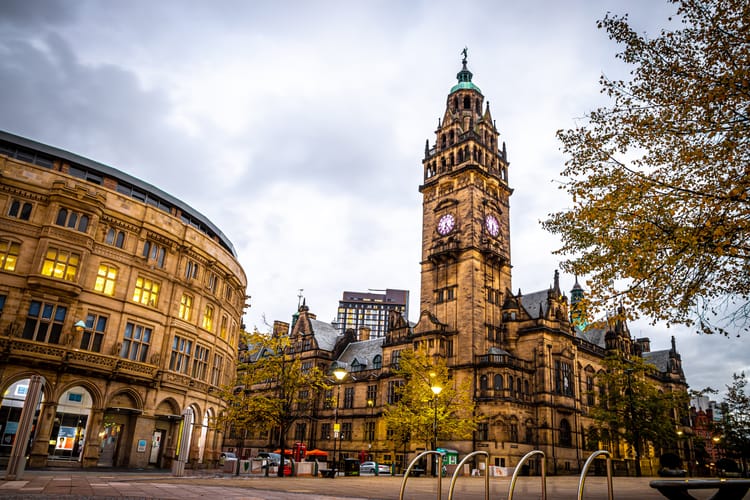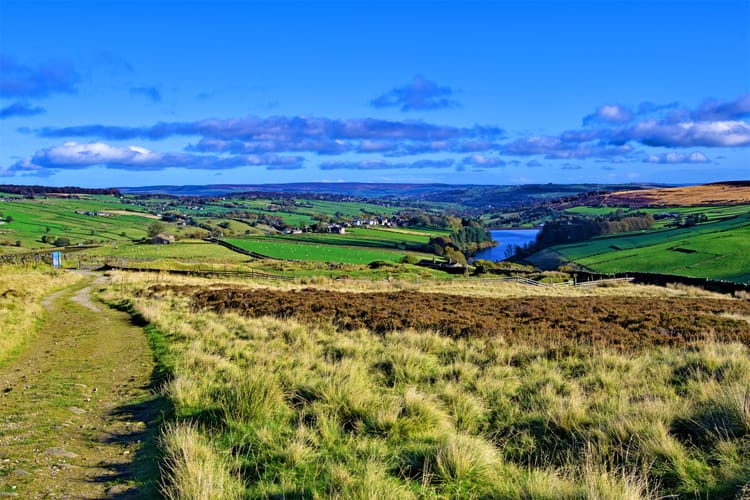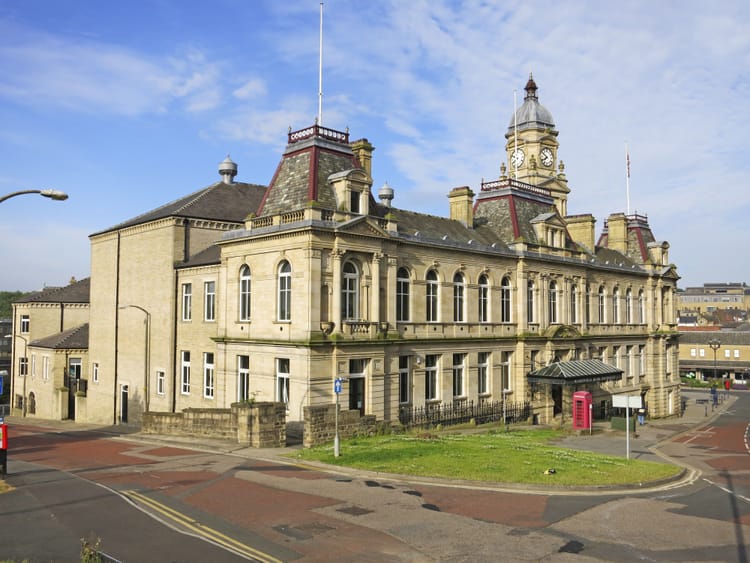Best Places to Find Bluebells in Yorkshire
Yorkshire, with its picturesque landscapes and ancient woodlands, offers some of the most enchanting displays of bluebells each spring. These delicate flowers create a striking blue-violet tapestry that blankets the woodland floors, transforming the scenery into a vivid and serene spectacle. The sight of bluebells in bloom is a quintessential British experience. Yorkshire holds a reputation for some of the best places to witness this natural phenomenon.
The county's diverse range of habitats, from the steep-sided valleys within its National Parks to the serene woodland nature reserves near market towns, provides ideal conditions for bluebells to thrive.
As spring advances, bluebell walks become a popular activity. These walks allow residents and visitors alike to immerse themselves in the stunning displays and the accompanying chorus of birdsong. These walks are not only a visual treat but also an opportunity to connect with Yorkshire’s abundant wildlife and the calming effects of nature.
In certain areas, like the North York Moors, bluebells are so prolific that they attract photographers and nature enthusiasts from all over the country. Local reserves also play host to a remarkable variety of flora and fauna, with bluebells being a significant draw during the flowering season.
Each location offers a unique setting for the bluebells. Whether nestled at the foot of ancient trees or adorning the edges of quaint rural paths, they are a sight to behold and a testament to Yorkshire's natural beauty.
The Charm of Yorkshire Bluebells
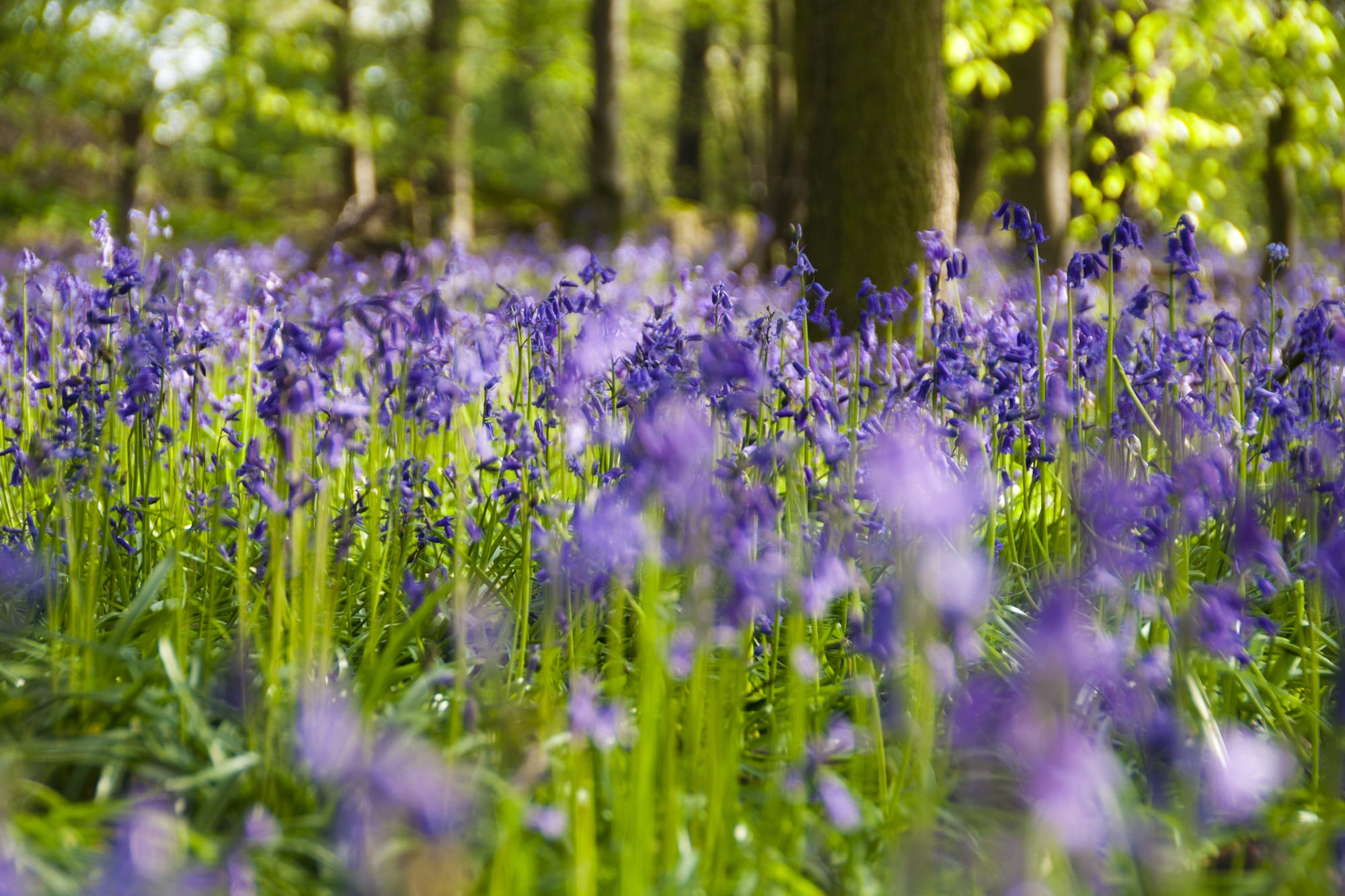
Spring in Yorkshire signals the emergence of a stunning natural spectacle as the ancient woodlands are carpeted with the delicate blooms of bluebells. These flowers, known for their vibrant cobalt-blue petals, are a quintessential part of the British countryside and herald the warmer months.
Yorkshire, a county rich in biodiversity, offers numerous nature reserves and woodlands where one can witness the bluebell phenomenon. These ancient woodlands are often untouched by intensive farming, allowing bluebells to thrive under the canopy of mature trees. The sight of a bluebell carpet stretching across the woodland floor is a testament to the health of these ecosystems.
In these settings, visitors are also likely to encounter an array of wildlife. The sounds of birdsong are commonplace, creating a serene environment that complements the visual beauty of the bluebells. Nature enthusiasts will appreciate the care taken to preserve these areas, often integral to local conservation efforts.
Below are some notable locations for bluebell viewing in Yorkshire:
- Woodland Nature Reserve: Located near Market Weighton, this reserve is famous for its remarkable bluebell displays.
- Newton Woods & Roseberry Topping: A part of the North York Moors offering breathtaking views.
- Oxenber Woods: Close to Austwick, known for its scenic bluebell walks.
These spots exemplify the beauty of Yorkshire's bluebell-laden countryside and are worth a visit for anyone seeking to experience one of the UK's most enchanting natural events.
Prime Bluebell Spots in Yorkshire
Yorkshire provides a spectacular display of bluebells each spring. Visitors are treated to a stunning visual feast as woodlands across the region transform with vibrant blue hues.
Hardcastle Crags
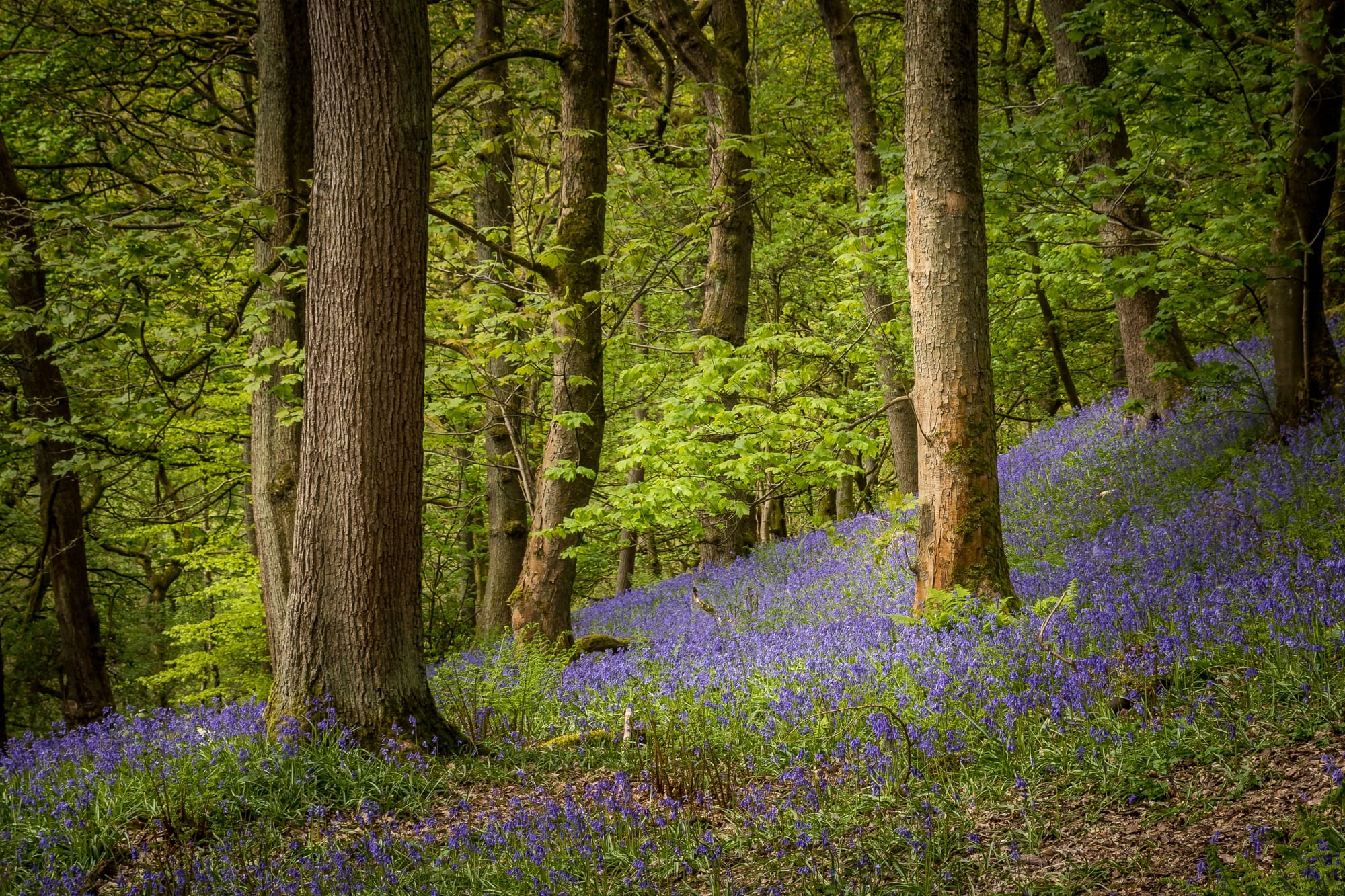
Hardcastle Crags, located near Hebden Bridge, is a National Trust site known for its lush woodland and picturesque streams. In spring, the area becomes a prime spot for observing bluebells, with swathes of them creating a vivid blue carpet beneath the trees.
Middleton Woods
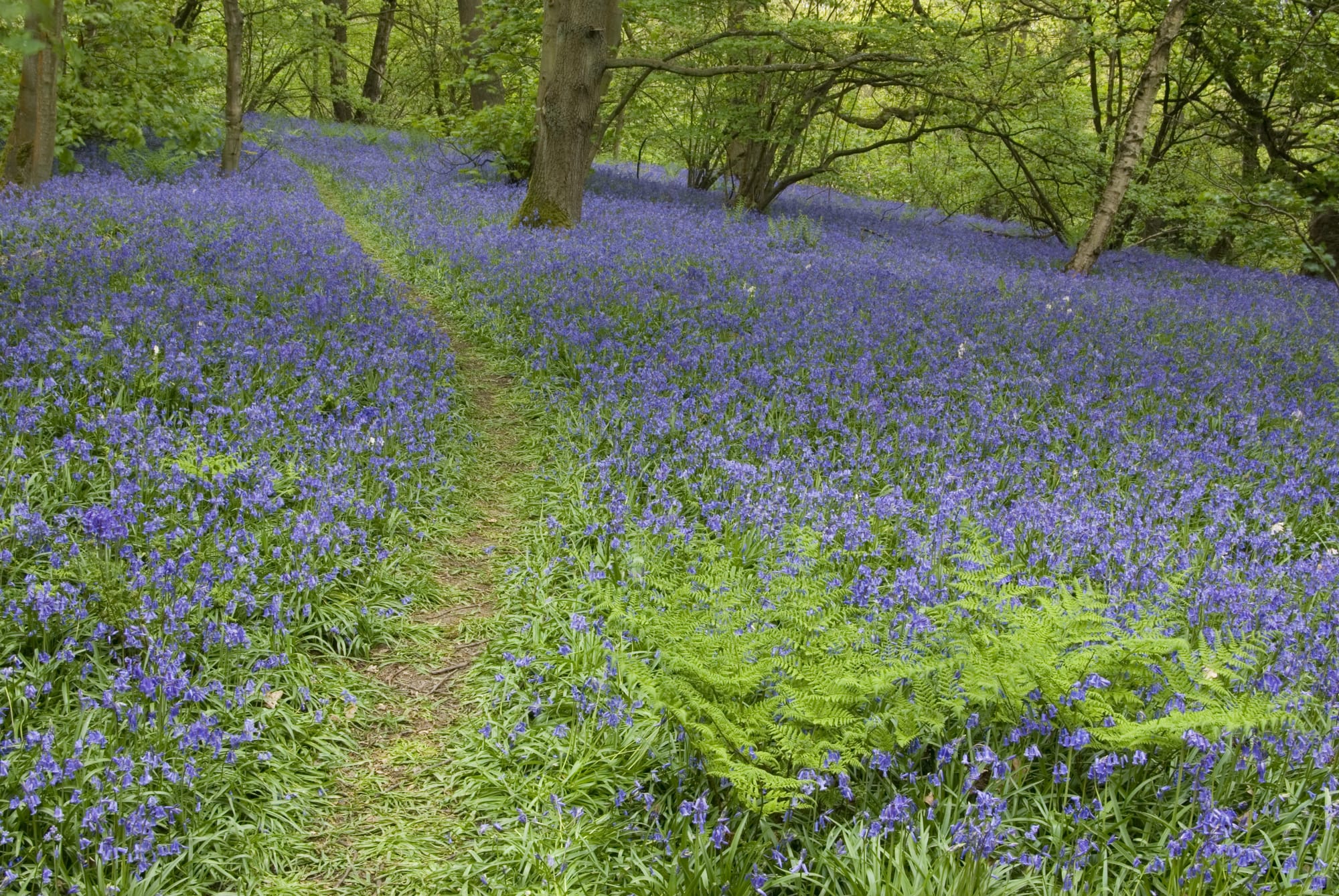
Situated near Ilkley, Middleton Woods is renowned for its extensive coverage of bluebells during the spring months. These woods offer walking paths that meander through bluebell-strewn areas, offering a tranquil experience for nature lovers.
Nidd Gorge
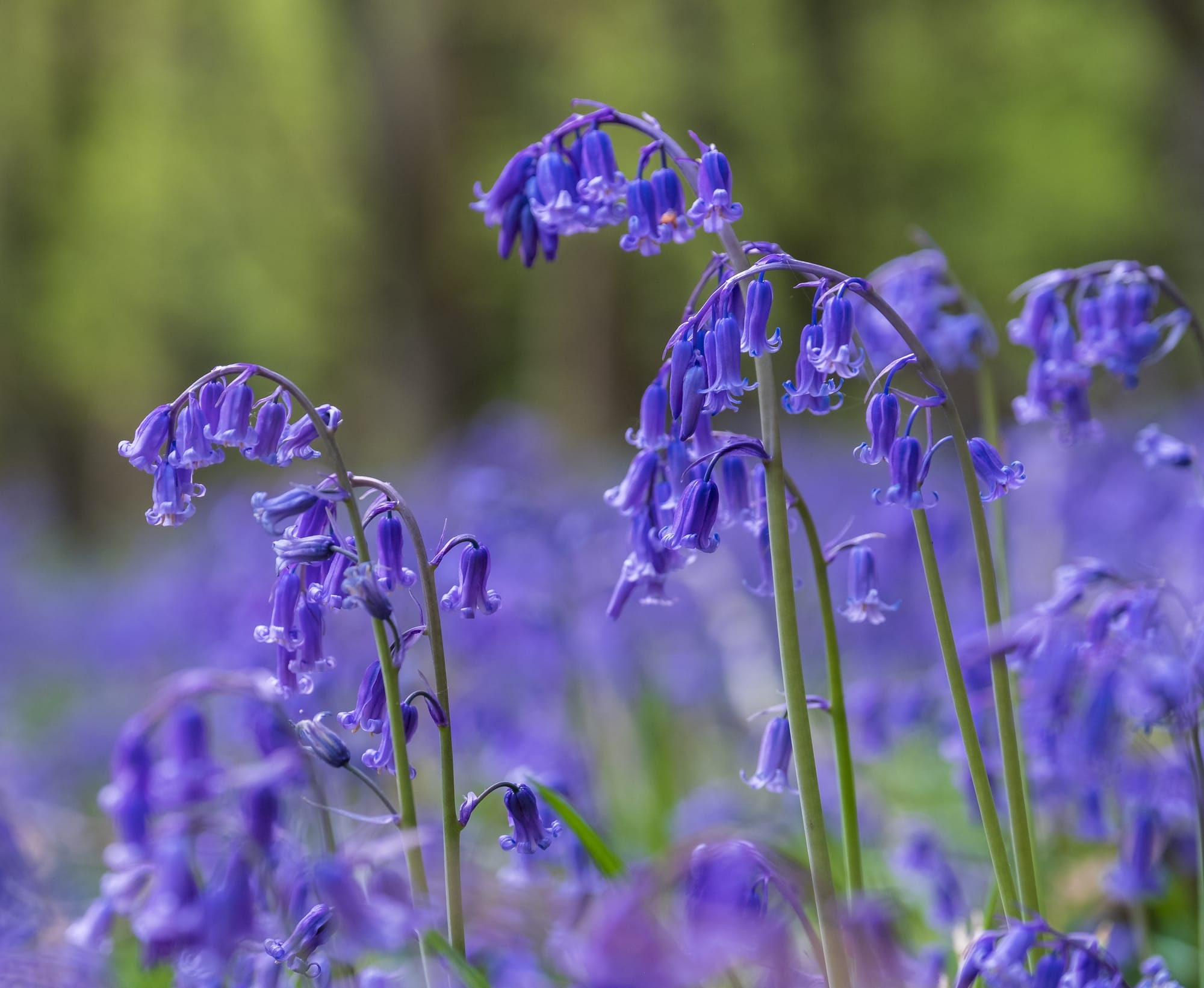
The Nidd Gorge, close to Knaresborough, boasts ancient woodlands lining the River Nidd. It's a habitat that during spring is transformed by the emergence of bluebells, providing a spectacular display of natural beauty within a stones' throw of urban areas.
Skipton Castle Woods
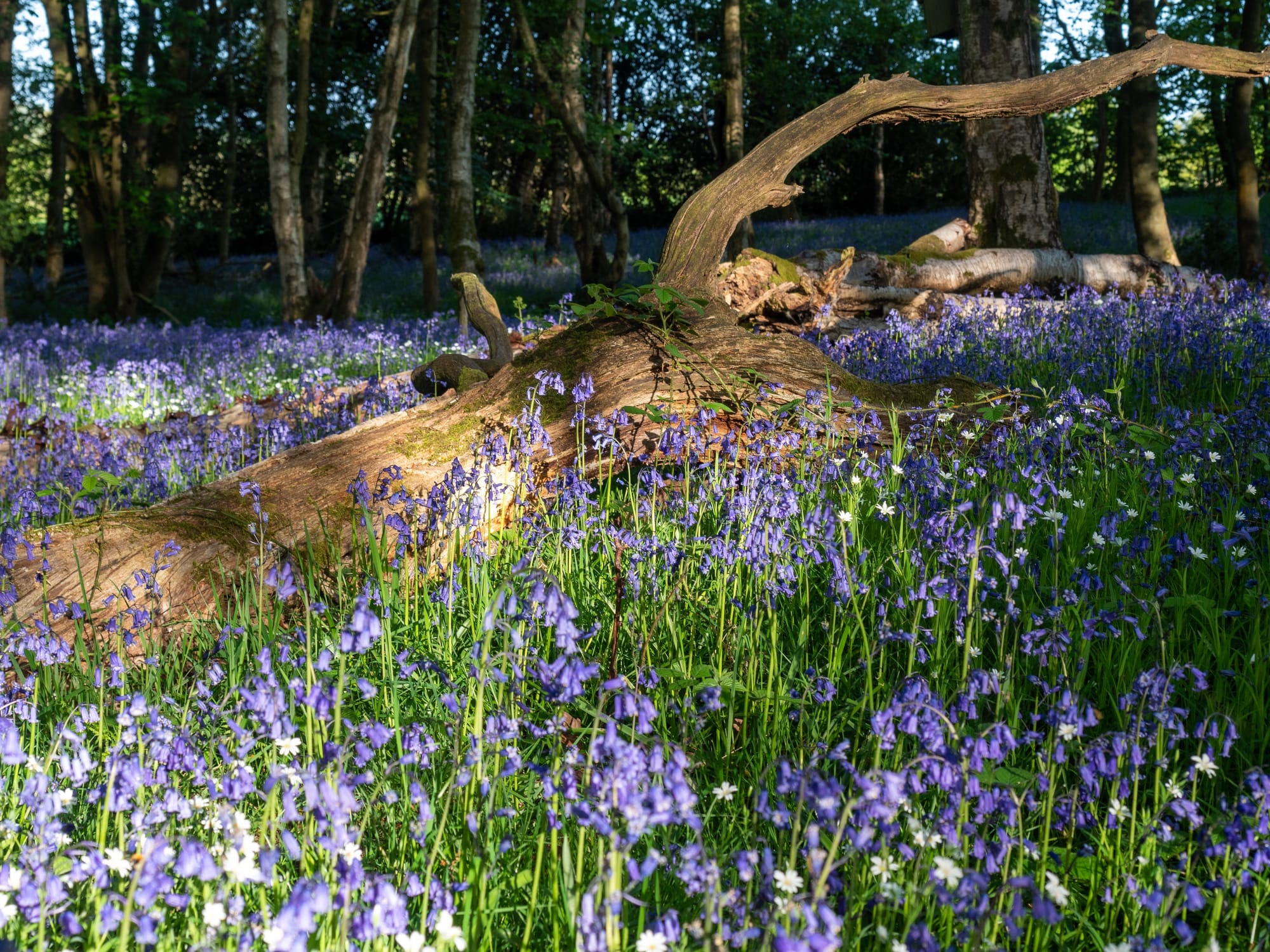
Adjacent to the historical Skipton Castle, in the heart of Skipton, lie Skipton Castle Woods. This ancient woodland provides a habitat for an array of wildlife and a remarkable collection of bluebells, adding a splash of colour to the landscape each spring.
Other Bluebell Spots in Yorkshire
Yorkshire boasts numerous locations where visitors can enjoy the alluring sight of bluebells in their natural habitat. Each spot offers a unique experience, from tranquil ancient woodlands to sweeping valleys dotted with the vibrant blue of bluebell flowers.
Nostell Priory, Wakefield
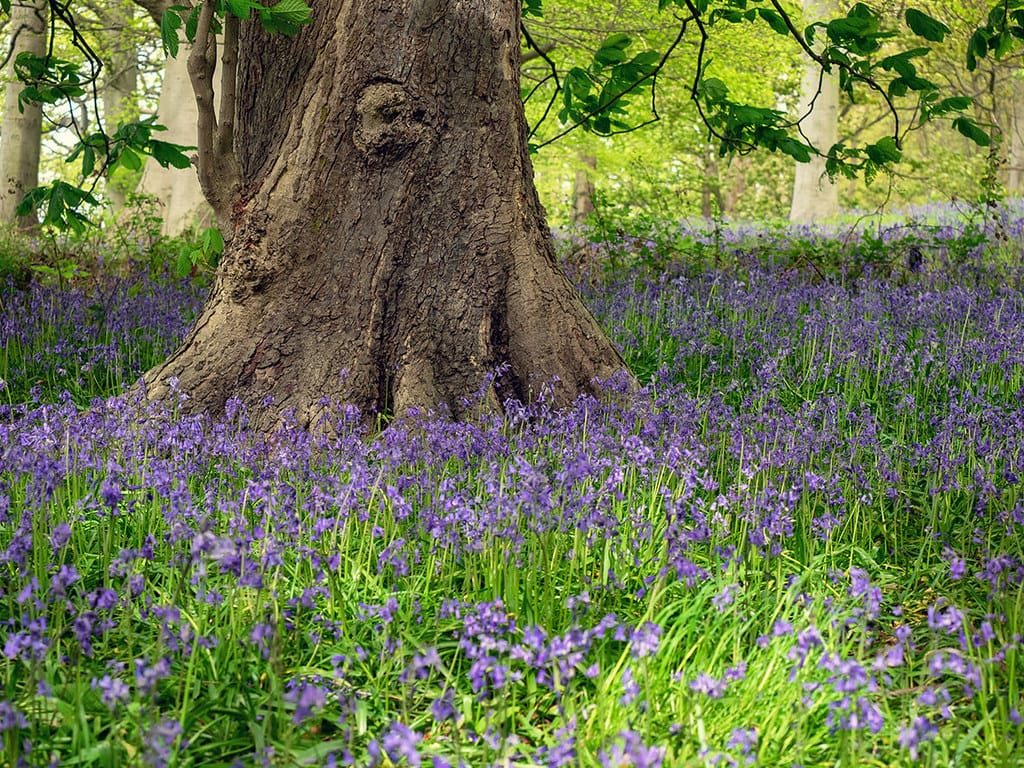
Nestled within the estate of a grand 18th-century house, Nostell Priory features bluebell displays that adorn its expansive grounds, providing a classical backdrop for springtime walks.
Northcliffe Woods, East Yorkshire
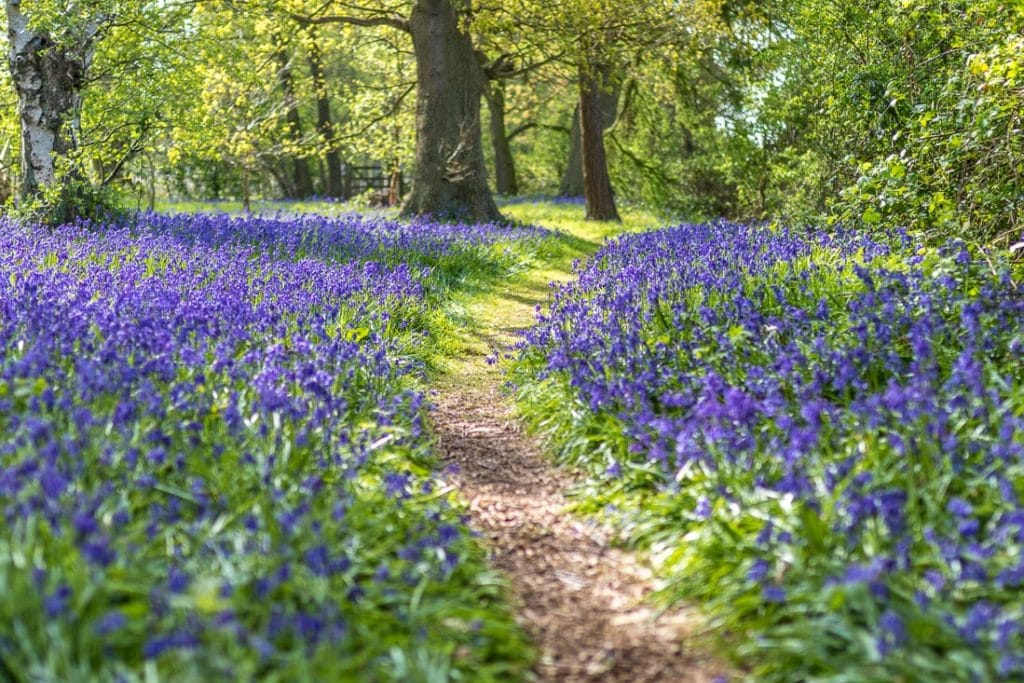
Northcliffe Woods is a serene local haven and an optimal spot for bluebell seekers. Its pathways meander through dense bluebell populations, offering a peaceful nature retreat.
Newton Woods & Roseberry Topping
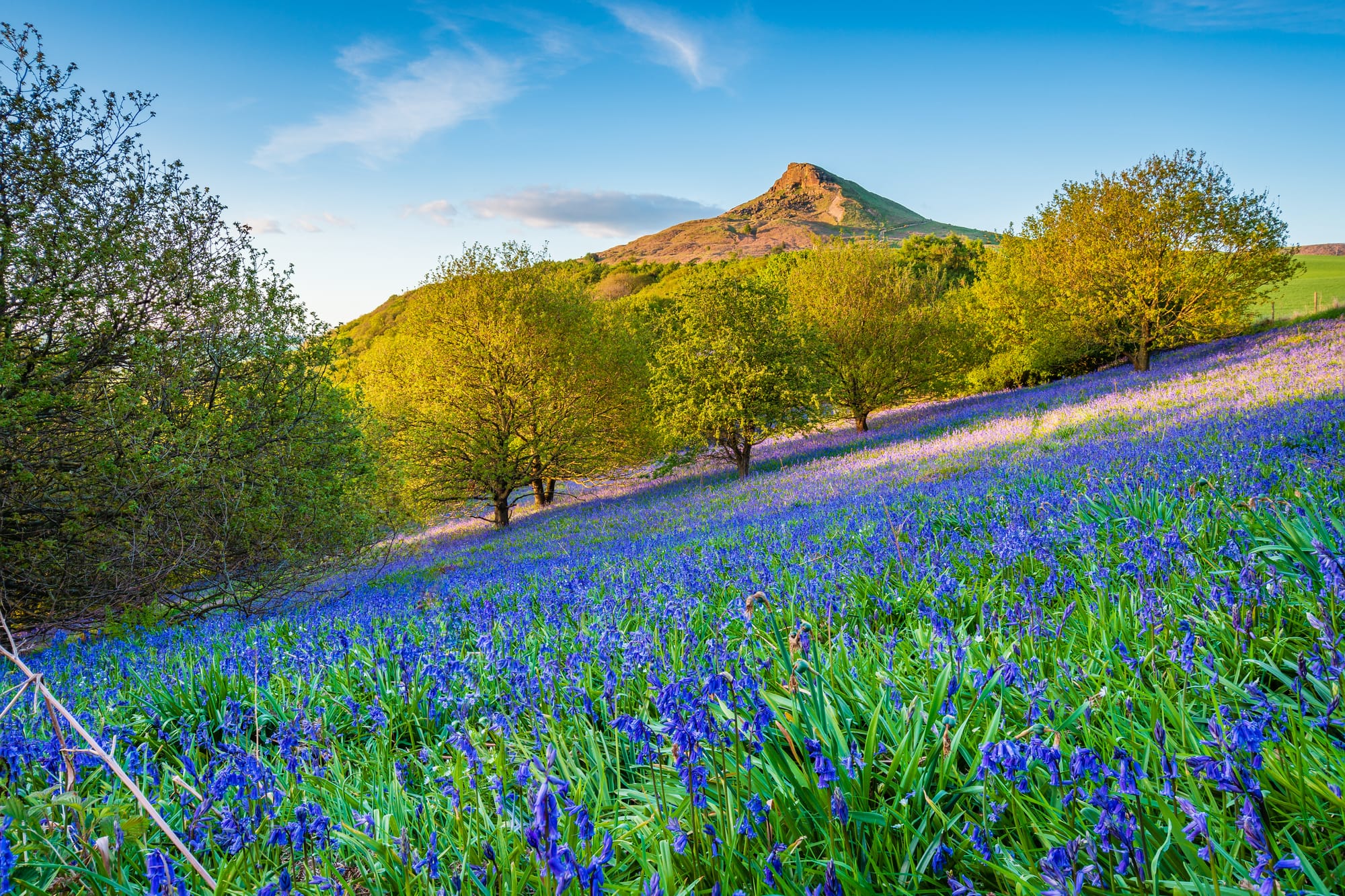
Newton Woods near Roseberry Topping is well-regarded for its spectacular bluebells, flourishing beneath the watchful peak of the distinctive hill, forming a picturesque woodland scene.
Moss Valley Woodlands, Sheffield
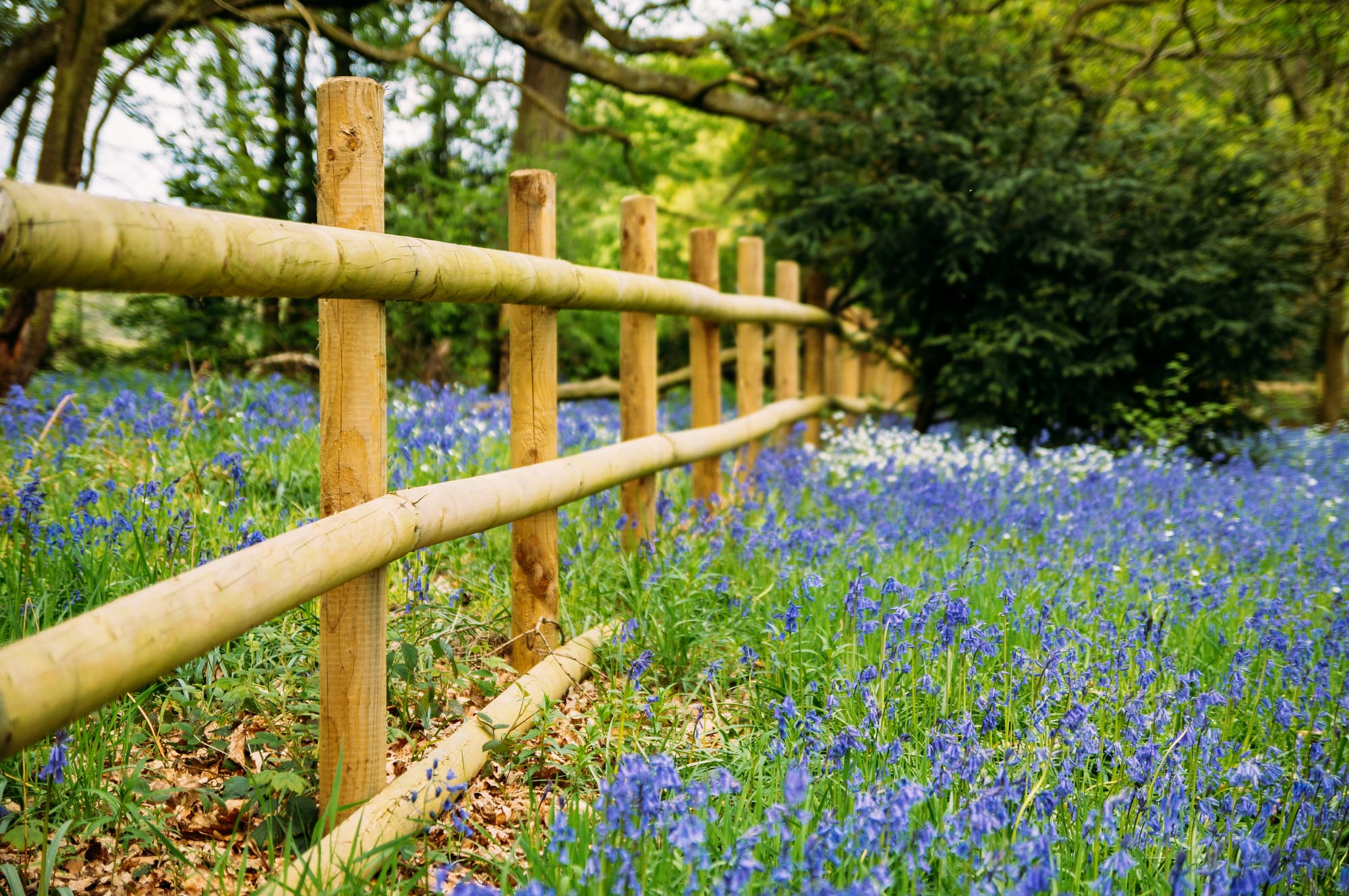
Sheffield's Moss Valley Woodlands protect a bluebell spectacle each spring. A canopy of mature trees frames the enchanting bluebell carpet beneath.
Hackfall Wood, Masham
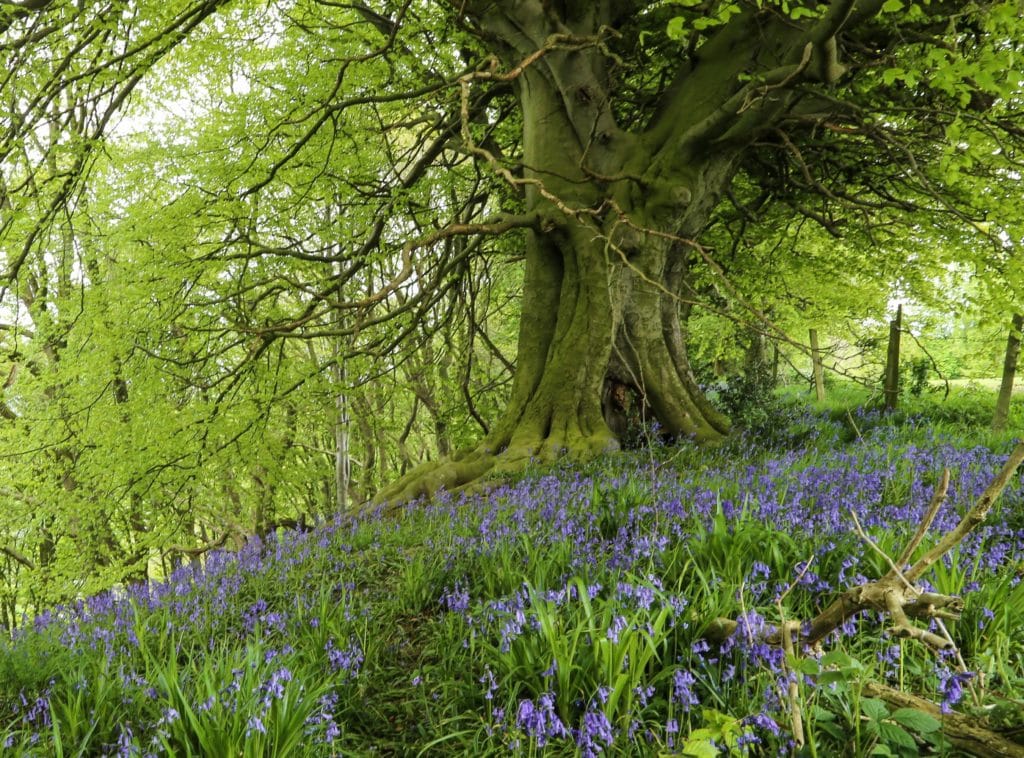
Historic Hackfall Wood surprises visitors with its natural beauty and swathes of bluebells, particularly near the ruins and follies scattered throughout the woodland.
Millington Woods, East Yorkshire
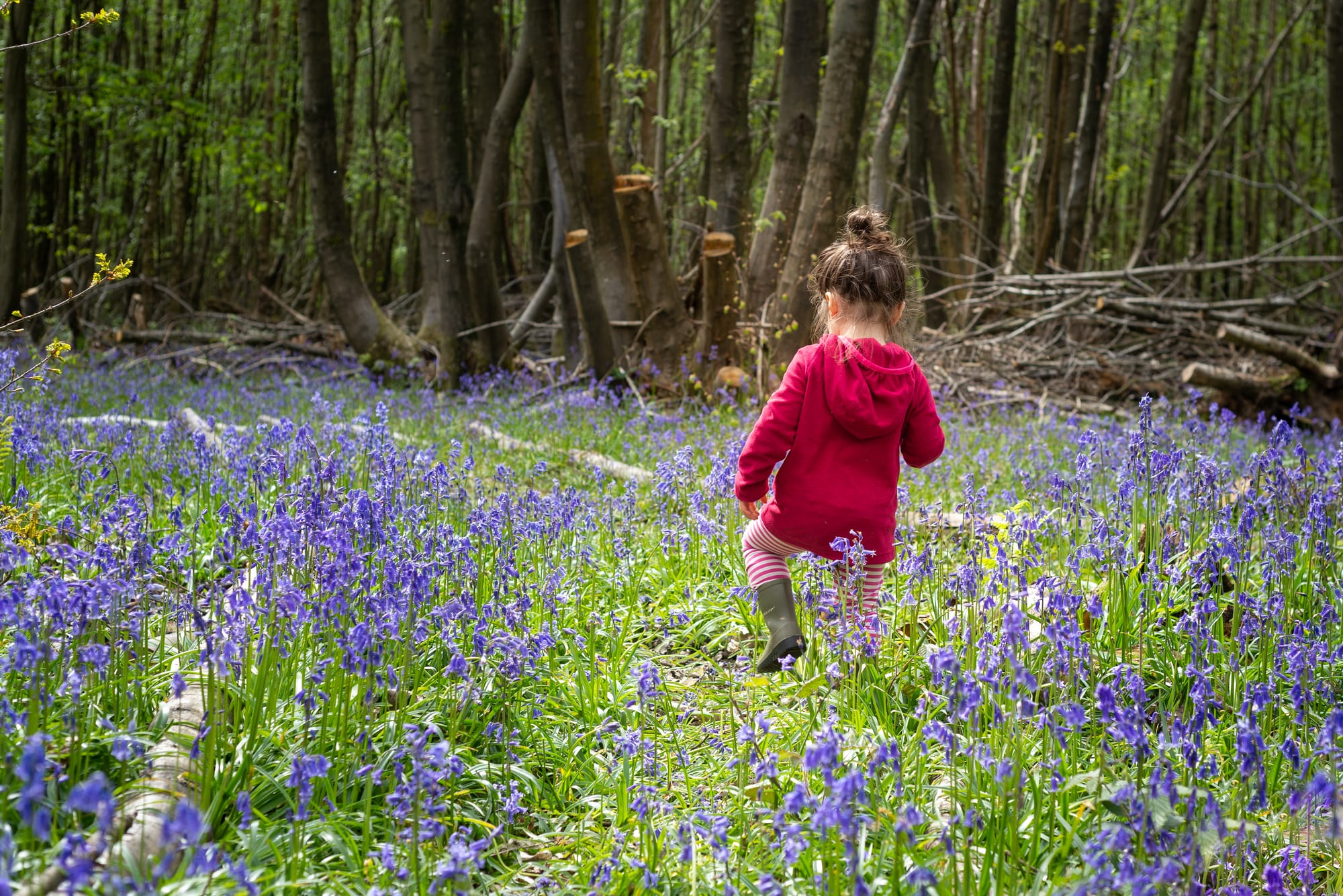
Millington Woods, one of the remaining ancient woods in East Yorkshire, comes alive with a flush of bluebells providing a striking contrast to the enduring greenery.
Honley Wood
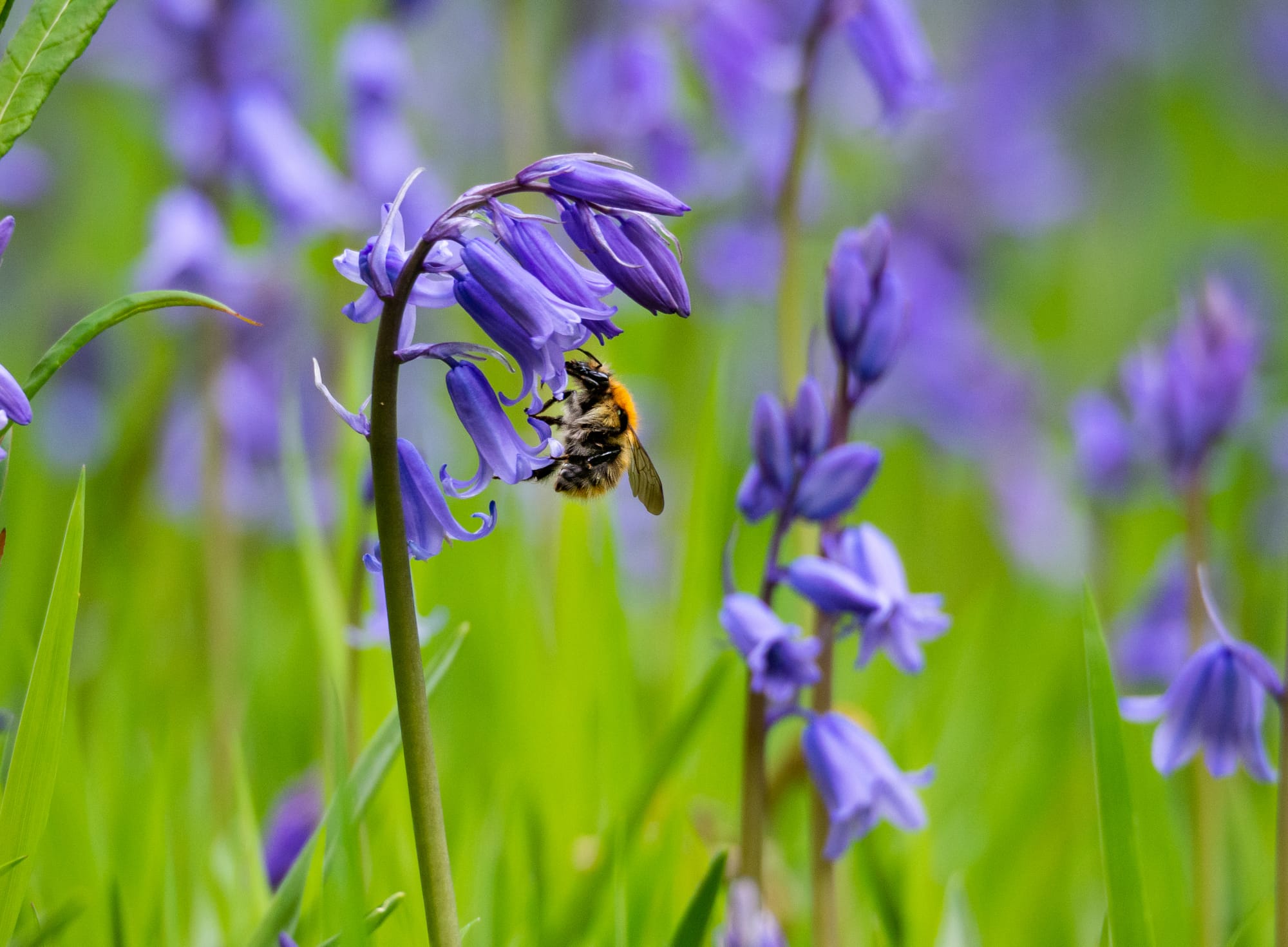
Honley Wood, a local favourite, is recognised for its delightful bluebell displays which complement the biodiversity of the area and add colour to the textured woodland floor.
TP Woods, Gledholt
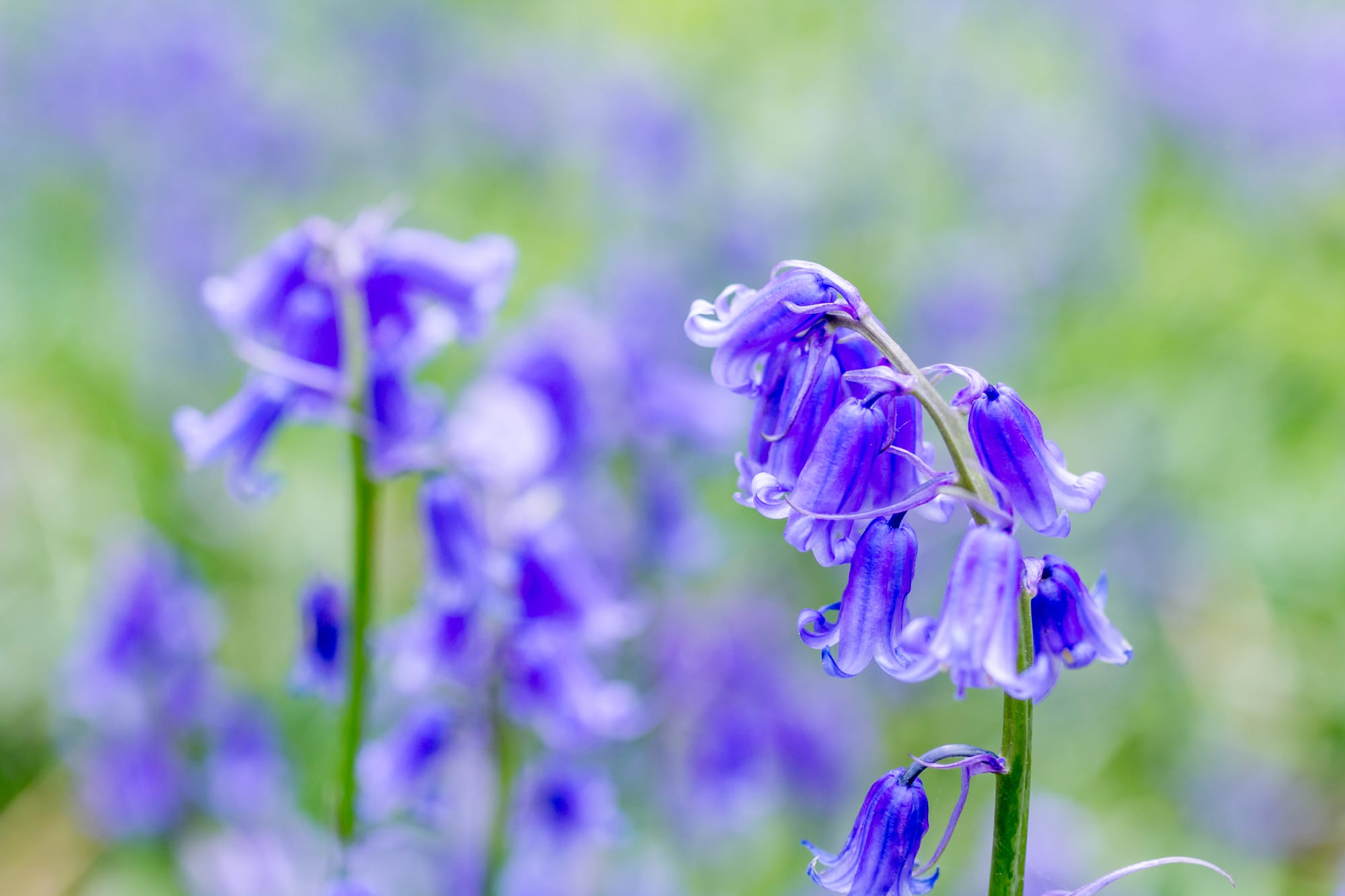
Hidden within a suburban area, TP Woods offers an intimate bluebell experience, where visitors can wander paths surrounded by the quintessential spring flower.
Bluebell Bloom Season and Timing
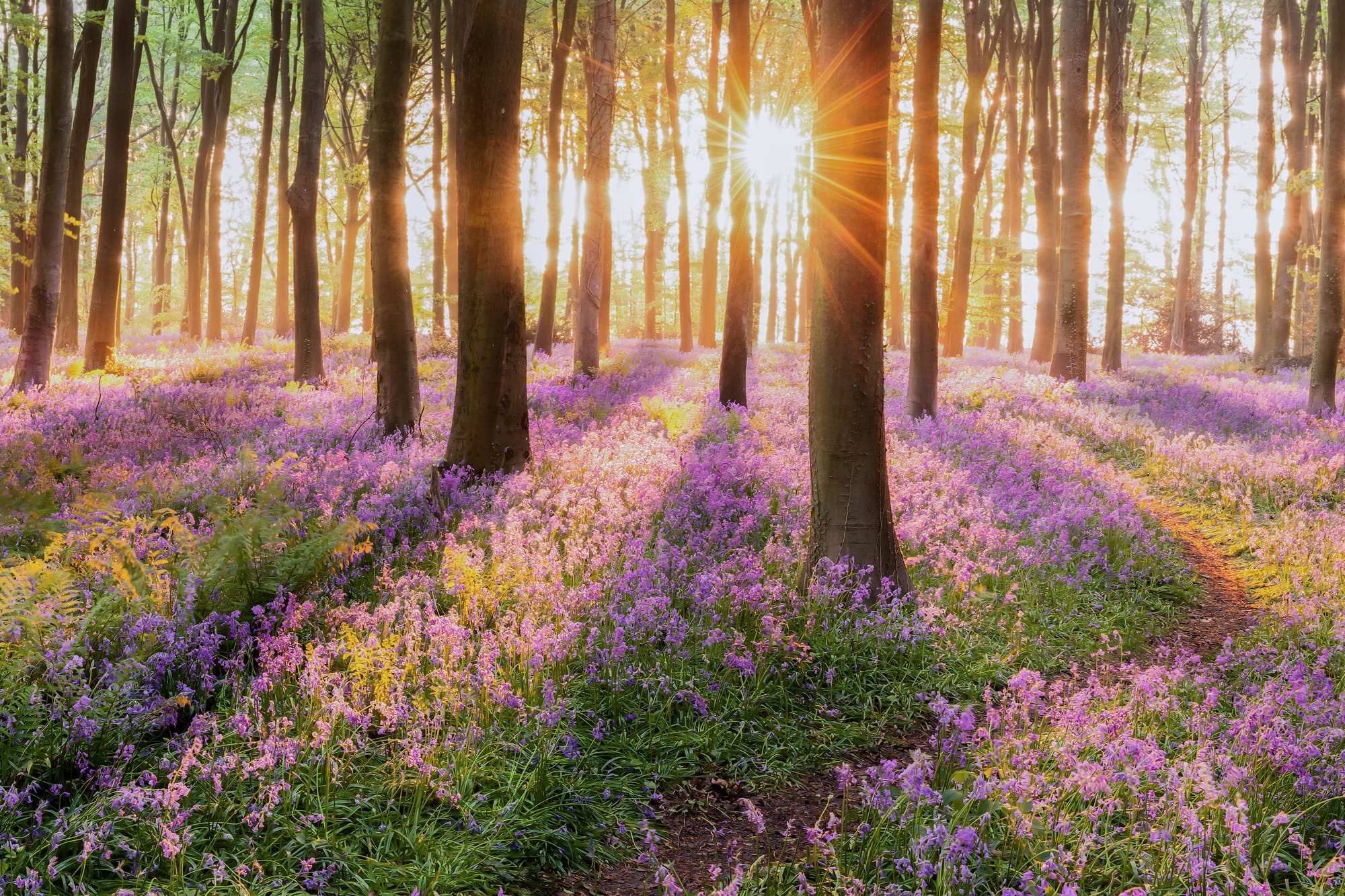
As spring unfurls its colours across Yorkshire, one of the most enchanting spectacles is the bluebell bloom. Notably, May is the peak time to experience this floral display. These indigo blossoms predominantly adorn the floors of woodlands, creating picturesque scenes reminiscent of nature's own gardens.
The emergence of bluebells begins in mid-April, depending on the weather. Milder winters can lead to earlier appearances, but typically, the blooms are in full splendour by May.
Enthusiasts should plan their visits during this period to capture the full extent of bluebell woods. The time to find bluebells in their prime will vary slightly each year, with weather conditions playing a pivotal role. However, they generally continue to grace the woodlands throughout the month.
Below is a guide to understanding the bluebell bloom timeline:
- Mid-April: Early bluebells begin to surface, heralding the start of the bloom season.
- May: Optimal time to visit for the most vibrant displays within gardens and woods.
- Weather Dependence: Timing and duration of blooms can shift due to seasonal weather patterns.
Bluebell Conservation Efforts
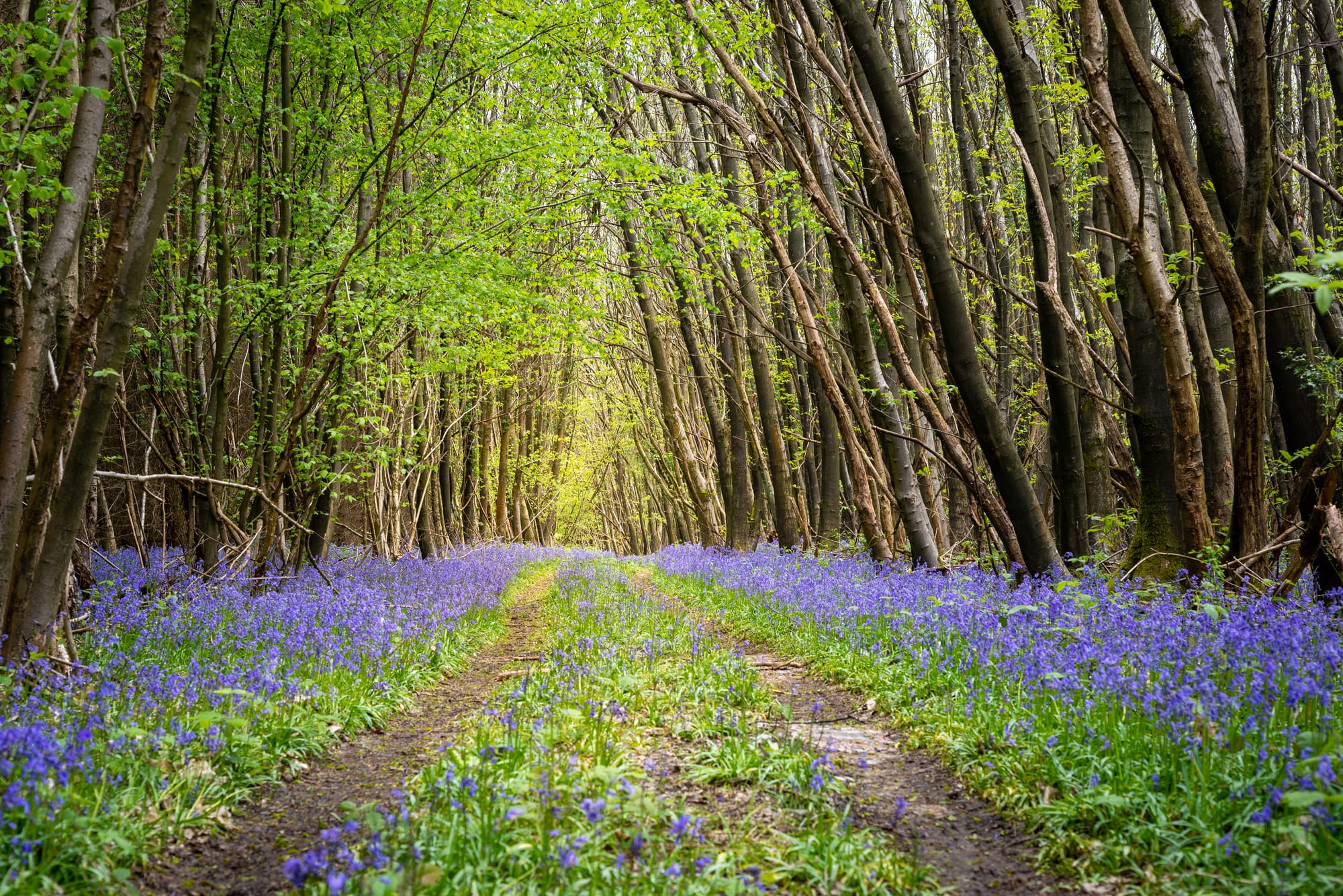
Conservation organisations in the UK place great emphasis on the preservation of bluebells, recognising their ecological significance. Notable among these is the National Trust, which actively manages and protects ancient and semi-natural woodlands, which serve as ideal habitats for bluebells.
Protection Legislation:
- Wildlife and Countryside Act
The Wildlife and Countryside Act is a pivotal piece of legislation that safeguards bluebells, among other native species, against intentional uprooting and sale.
Ancient Woodland Management:
- Habitat Maintenance: Regular coppicing, clearing non-native species, and monitoring to promote healthy bluebell growth.
- Public Education: Raising awareness about the importance of bluebell conservation to prevent trampling and habitat degradation.
Nature Reserves:
- Volunteer Involvement
Additionally, nature reserves across Yorkshire provide sanctuaries where bluebells can flourish in their natural habitats. These reserves ensure not only the survival of bluebells but also support a diverse range of wildlife.
Volunteer Involvement:
- Engagement of local communities through volunteer programmes aids in ongoing conservation efforts.
Volunteers assist in habitat restoration and monitoring which contributes significantly to bluebell preservation.
Wildlife Among the Bluebells
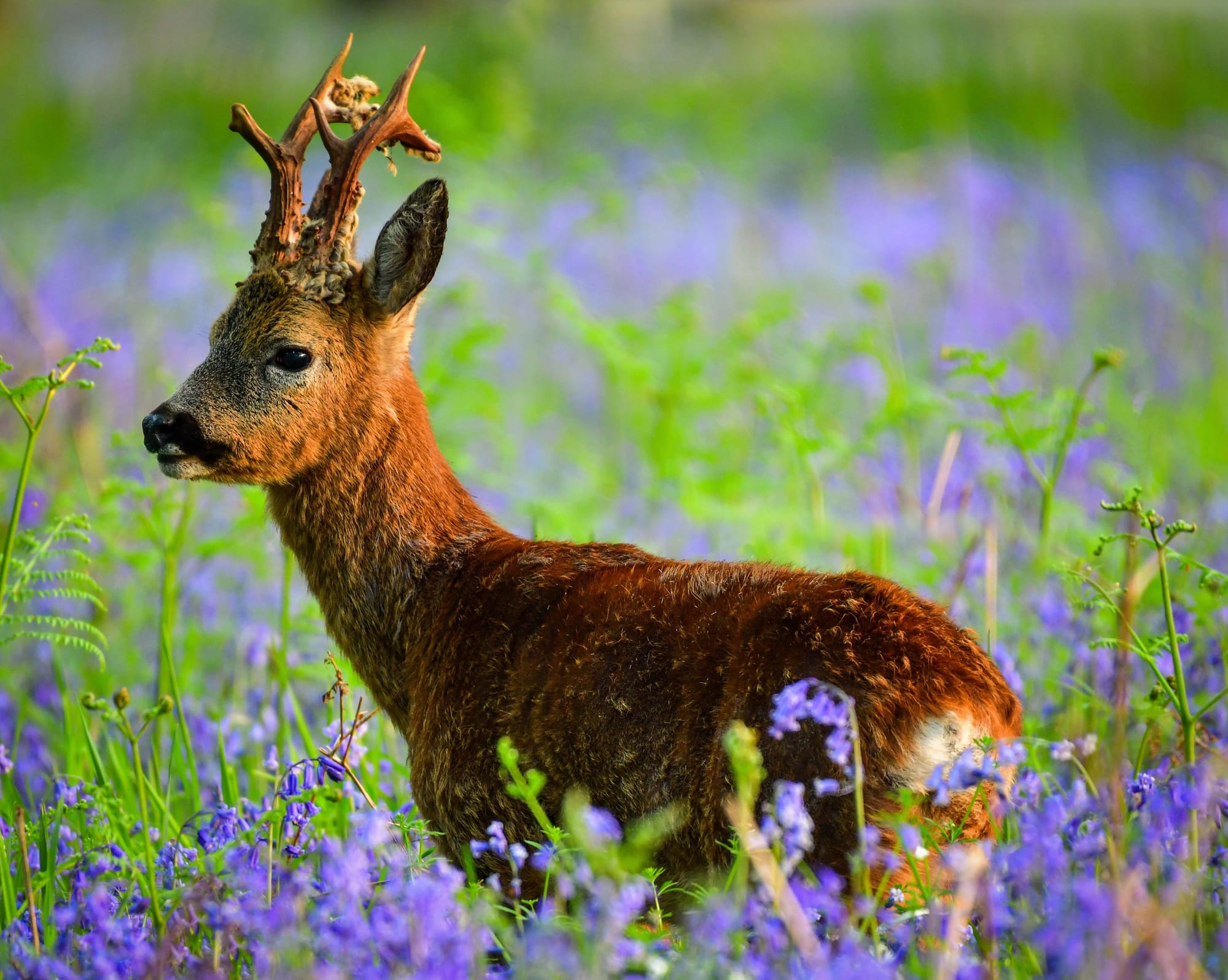
In the heart of Yorkshire's nature reserves, a captivating display of bluebells heralds the arrival of spring, painting the woodlands with vibrant hues of blue and lilac. Amid these floral seas, one may observe an array of wildlife, thriving in the unique ecosystem the bluebell woods provide.
Roe Deer: Often glimpsed at dawn or dusk, these graceful creatures are a common sight within Yorkshire's bluebell habitats. Their reddish-brown coats often blend seamlessly into the woodland backdrop, making them enchanting yet elusive residents.
Butterflies: A variety of butterflies flutter amongst the bluebells, adding a dynamic element to the landscape. Notably, the speckled wood butterfly and the orange tip find these environments particularly habitable, their patterns seeming to dance in the dappled sunlight filtering through the canopy.
Flora: Beyond bluebells, the woodland floor boasts a diverse range of flora. Early purple orchids sometimes share the same spaces, adding a touch of diversity to the visual splendour. Foxgloves, too, when in bloom, tower and contrast with the bluebells' sea.
Photography and the Bluebell Phenomenon
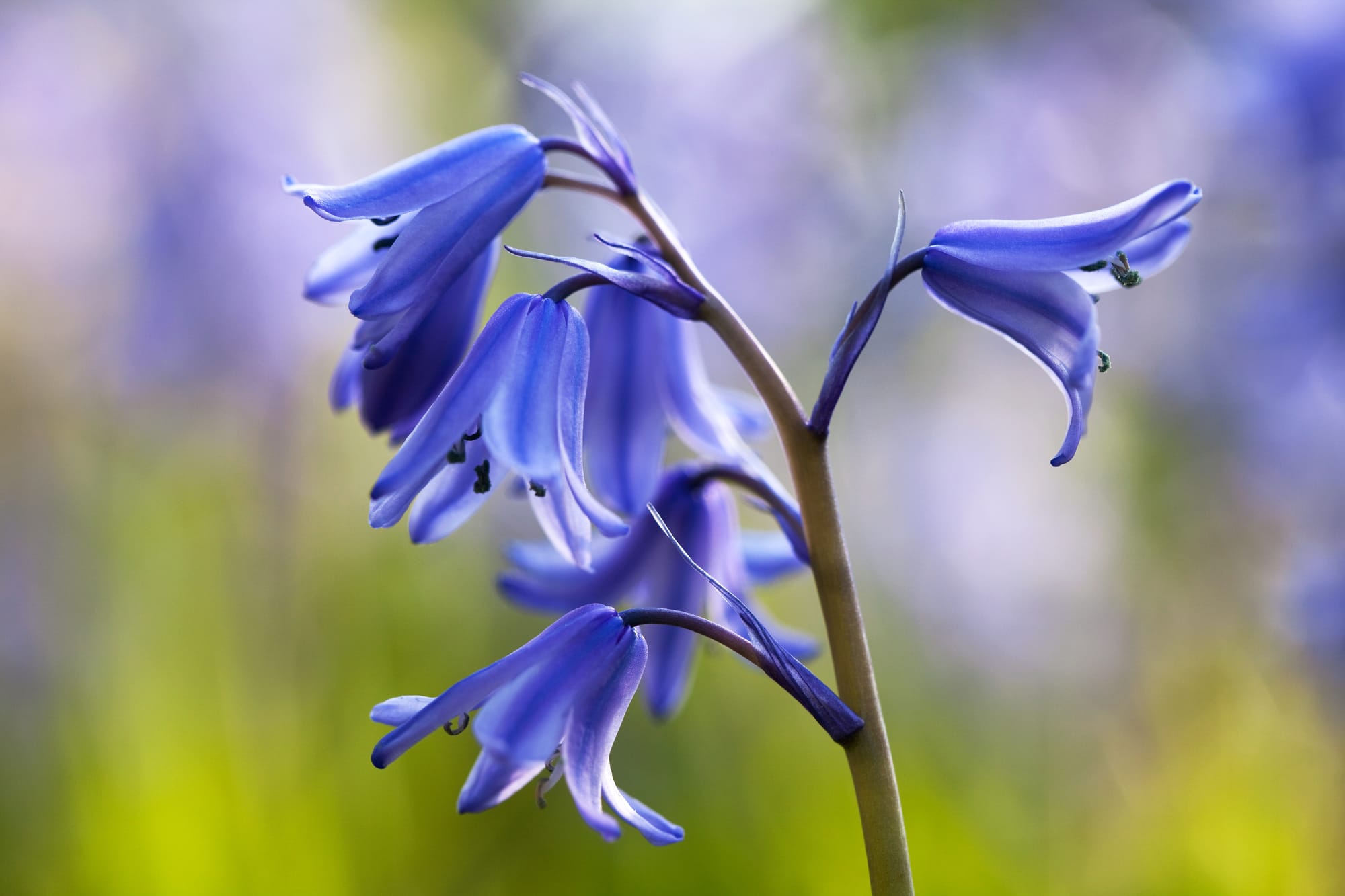
Every spring, the forests and countryside of Yorkshire burst into a lilac haze as bluebells emerge to carpet the forest floors. Photographers, both amateur and professional, are presented with a unique phenomenon that captures the essence of British springtime.
Best Times for Bluebell Photography
- Early morning: Light is soft, and the low sun casts gentle hues through the trees.
- Late afternoon: Golden hour brings a warm glow that contrasts beautifully against the cool bluebell tones.
Ideal Settings for Capturing the Hues
- Aperture: Use a wide aperture to create a shallow depth of field that enhances the bluebells while softly blurring the background.
- ISO: Keep it low to reduce noise, especially in the soft morning or late afternoon light.
- Shutter Speed: Adjust according to the light; faster for bright conditions, slower under the canopy of trees.
| Primary Locations in Yorkshire | Notable Features |
|---|---|
| Middleton Woods | A vivid display that transforms the landscape in May |
| Market Weighton | Noted for both bluebells and birdsong |
Photographing bluebells involves respect for the environment. Visitors are encouraged to stick to paths and avoid disturbing the delicate flowers, ensuring the bluebells continue to be a symbol of Yorkshire's natural heritage for years to come.
Frequently Asked Questions
Bluebells in Yorkshire present a splendid display of natural beauty. Their vibrant hues attract both nature enthusiasts and casual visitors. Here are some common questions to help plan your visit.
In which Yorkshire woodlands can one find the best displays of bluebells?
Yorkshire's ancient woodlands offer some of the best bluebell displays. Newton Woods and Roseberry Topping in the North York Moors present impressive sights.
What are the top locations for bluebell sightings in Yorkshire?
Some of the top locations for bluebell sightings include the wooded areas around Market Weighton. The nature reserves in the East Riding of Yorkshire are also renowned for their bluebell carpets.
During which time of the year are Yorkshire's bluebells typically in full bloom?
Bluebells in Yorkshire are typically in full bloom during the UK's springtime. This is around late April to early June, creating a mesmerising floral display.
Are there any famous bluebell walks in Yorkshire?
Yes, the woodlands around Ilkley and Middleton woods are known for their bluebell walks. They offer a mixture of beautiful sceneries and walking paths lined with blue flowers.
Can you suggest some lesser-known areas in Yorkshire for observing bluebells?
Lesser-known areas for observing bluebells in Yorkshire can be found in smaller, secluded woods and nature reserves. They offer tranquil viewing experiences away from the crowds.
What tips should I consider when visiting bluebell areas in Yorkshire to ensure conservation?
Visitors should stay on marked paths to avoid trampling the flowers. Picking or digging up bluebells is illegal in the UK. They should be enjoyed without disturbance.

